How To Grill Vegetables Without A Grill Using A Stove Top Grill Pan
on Jun 24, 2019, Updated Jul 08, 2022
This post may contain affiliate links. Please read our disclosure policy.
A stove top grill pan is a great way to cook veggies and fruits indoors in the comfort of your kitchen. Learn how to grill vegetables without a grill.
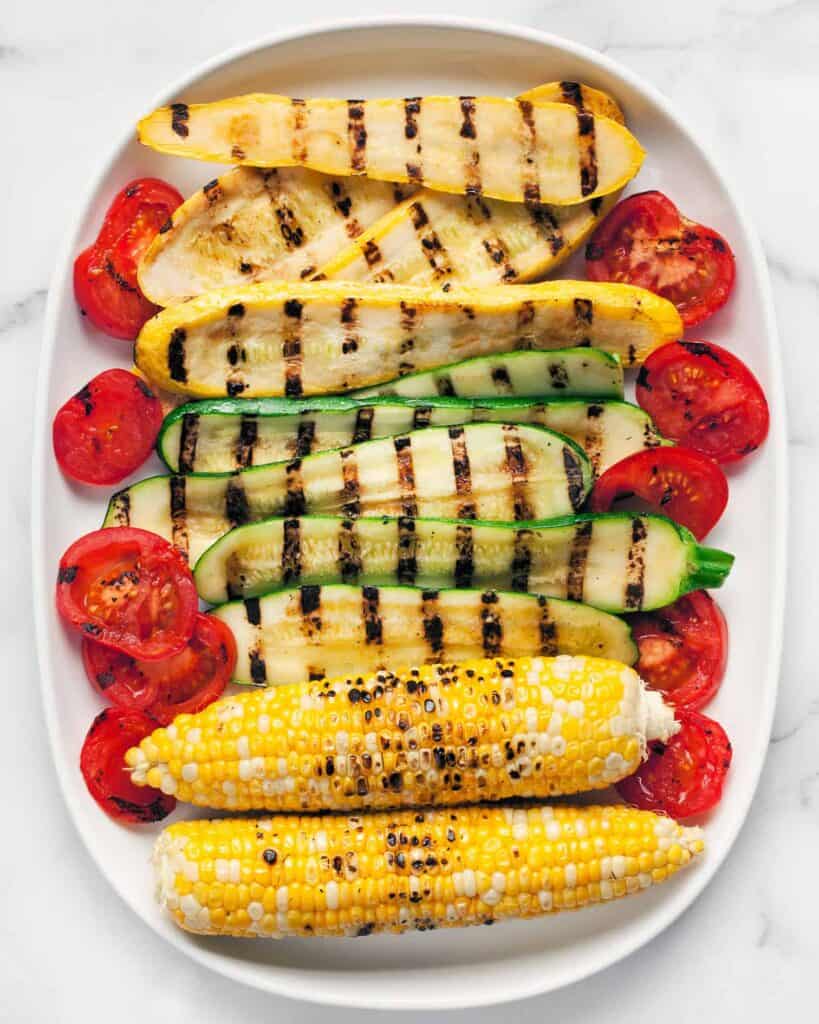
Table of Contents
Growing up in suburban Cincinnati, I never pictured my adult life not involving a house with a yard.
It’s all I knew.
We vacationed in big cities like New York, but I don’t think I fully comprehended that families actually lived in Manhattan.
Fast forward a couple decades or so. Now I’m one of those city dwellers with my husband and son in a multi-unit building in Chicago.
We may not have grass, but we are fortunate enough to have outdoor space in the form of a deck that gets plenty of sunshine. No lawn maintenance required.
The most important thing on that deck isn’t the furniture or the container garden. It’s the grill.
I am out there rain or shine, even grilling with an umbrella and coat if necessary.
Try Grilling On The Stove
Many of my summer recipes involve grilling. The other day my mom asked me what to do since she doesn’t have an outdoor grill.
I know she’s not the only one, so I thought it would be good to do a post explaining how to grill vegetables inside without a grill.
Since they go right on top of the stove, grill pans are a great alternative to an actual grill for vegetables and fruit. I’m not a fan of indoor grilling for meat like burgers, steaks or chicken breasts. But quick cooking seafood like shrimp is definitely worthy of this special pan.
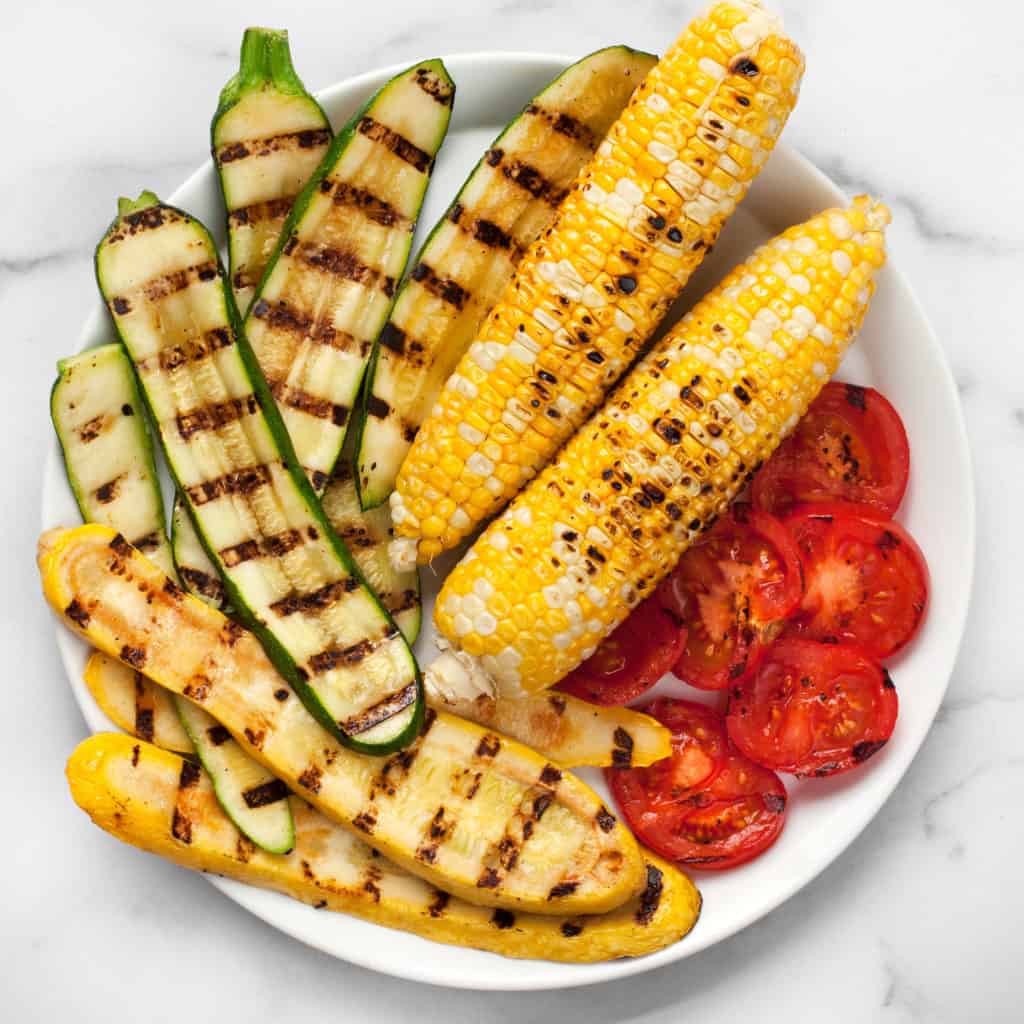
How Do Grill Pans Work
You can think of a grill pan like you would any of your other pots and pans. Except this one has a distinct line of ridges.
All you have to do is crank up the heat on a burner with this pan on top.
It’s important that the pan is hot before you start grilling.
Types of Grill Pans
Grill pans are not a huge investment. They range in price from about $30 to over $100 depending on the size and brand. Many pans are heavy gauge anodized aluminum. Others are cast iron, which are great at retaining heat. You can find skillet-style cast iron griddle pans with ridges that have a handle.
I have a large grill pan that covers two burners and a small grill pan that goes over a single burner. My preference is the smaller one because the temperature stays more even across the pan.
I would rather spend longer cooking my vegetables in batches instead of having more space on a larger grill pan. Plus it’s easier to store.
My stovetop grill pan has a non-stick coating, which makes it very easy to clean afterward.
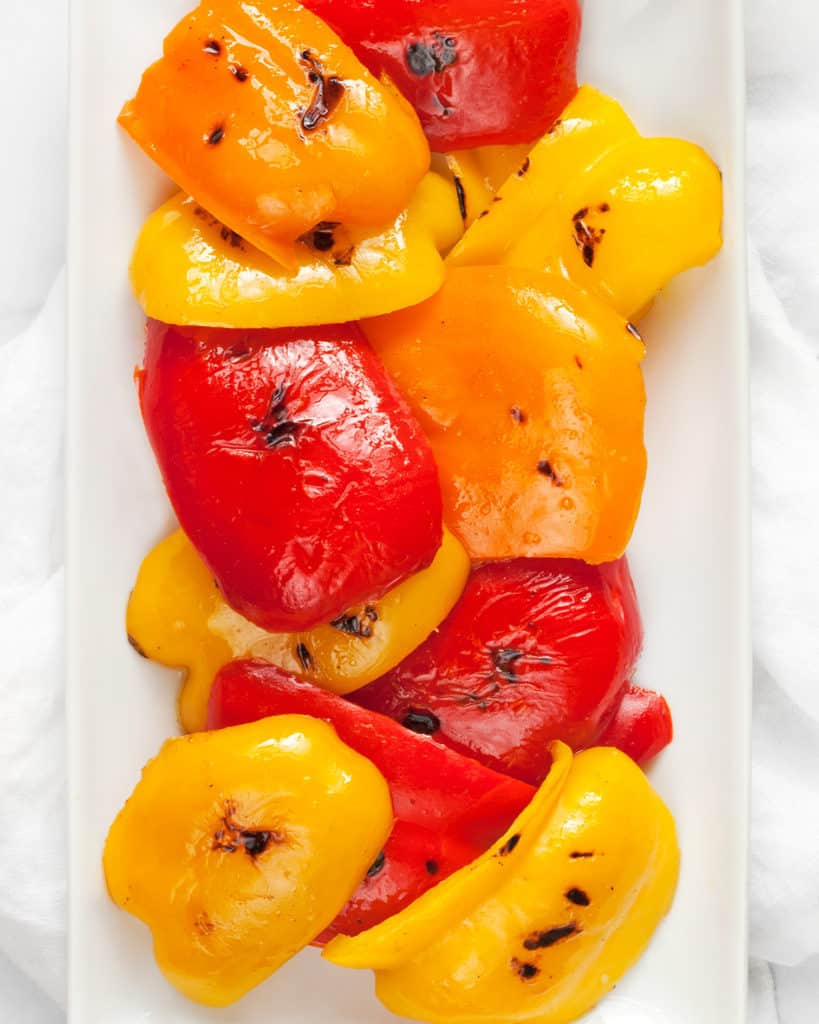
Smoky Ingredients To Amp Up Grilled Flavor
There are those grilling purists who say that nothing compares to a charcoal grill. Of course, I know you can’t replicate the taste from a charcoal grill.
That’s why I turn to dried spices to add my version of smoky flavor.
My go-to blend is a mix of cumin, smoked paprika, red pepper flakes, salt and pepper. Skip liquid smoke or other imitation flavorings.
Liquid marinades and sauces are also other options for flavoring your veggies.
How To Grill Vegetables Without A Grill
As I mentioned, preheating is key with a grill pan. You want it to be hot when those veggies make contact.
This is where you have to use your judgment. Cast iron pans take a little longer to heat up than anodized aluminum. I start by preheating over medium heat for 4-5 minutes.
I find if I turn up the stove all the way on high, it’s too much and things have a tendency to burn.
To know if the pan is hot enough, just flick a little water on it. The water should sizzle and steam on contact.
Another great way to check your pan is with a single sacrificial vegetable. I know that sounds dramatic.
Just like the first pancake on the griddle that never comes out as good as the rest, start by grilling a single zucchini strip or pepper. Then you can make sure you have the proper temperature to get those all-important grill marks and char.
You may need to adjust the heat higher. That’s another reason why I like to preheat at medium high heat. It’s easier to gradually increase the temperature instead of going the other way.
I’ve included cooking times as a guide in the recipe, but keep an eye on things.

Best Vegetables To Grill
Try these:
- Zucchini
- Corn
- Yellow squash
- Tomatoes
- Bell Peppers
How To Clean A Stove Top Grill Pan
First of all, do not put your pan in the dishwasher because it should be hand washed.
For grill pans with a non-stick coating, you can use warm water and mild dish soap to clean them. There is no need to use an abrasive sponge. You don’t want to risk scratching the finish on the pan.
It’s different with a cast iron grill pan. I like to put some water into the pan and let it come to a boil. That hot water will help loosen any food particles. Then, I turn off the heat and let the water cool off a little. As necessary, I take a silicone spatula and push off any stubborn food particles.
After that, let your cast iron grill pan cool off more before pouring out the water and rinsing it with hot water. Dry off the pan with a towel.
Also, you may need to season a cast iron pan from time to time.
How To Serve
These are a few of my favorite ways to eat grilled vegetables. I love them in salads, on sandwiches and paired with grains:
Grilled Tofu Shawarma
Grilled Vegetable Orzo Salad
Corn Edamame Succotash
Grilled Veggie Burrito Bowls
Grilled Peach, Corn and Quinoa Salad
How To Grill Vegetables Without A Grill
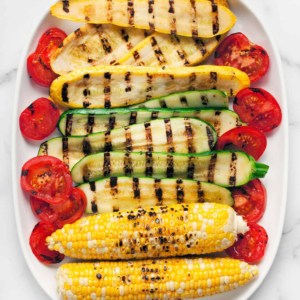
Ingredients
For spice mix
- 1 teaspoon cumin
- 1/2 teaspoon smoked paprika
- Pinch of red pepper flakes
- 1 teaspoon kosher salt
- 1/4 teaspoon black pepper
For vegetables
- corn, shucked
- zucchini, cut lengthwise into 1/4-inch-thick slices
- yellow squash, cut lengthwise into 1/4-inch-thick slices
- Medium to large tomatoes, cut 1/4-inch-thick slices
- bell peppers, cut into 3-inch wide strips
- Olive oil
Instructions
- Preheat a grill pan on the stove over medium high heat for 4-5 minutes.
- In a small bowl, combine the cumin, paprika, red pepper flakes, salt and pepper
- Toss the vegetables in olive oil and the spice mix.
- To know if the grill pan is hot enough, flick a little water on it. The water should sizzle and steam on contact.
- Start by grilling a zucchini or squash slice or a pepper to test the temperature of the pan.
- Adjust the heat of the burner as necessary.
- Continue grilling the vegetables, making sure not to crowd the pan
- Suggested grilling times: Corn: Grill the corn turning as you see grill marks on the cob, about 10-12 minutes.
- Zucchini and yellow squash: Grill the zucchini and squash about 3-4 minutes per side until grill marks appear.
- Bell peppers and tomatoes: Grill the peppers and tomatoes about 2-3 minutes per side until grill marks appear.
Notes
Nutrition
Nutrition information is automatically calculated, so should only be used as an approximation.

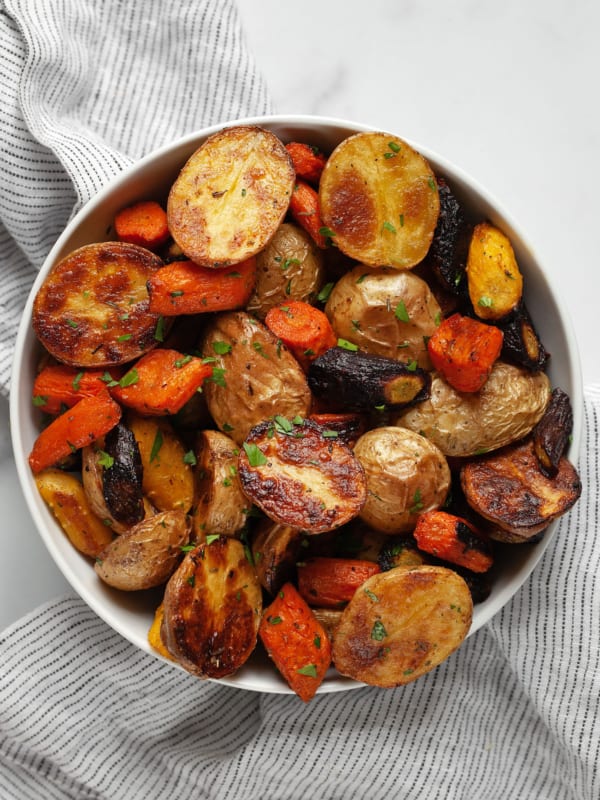
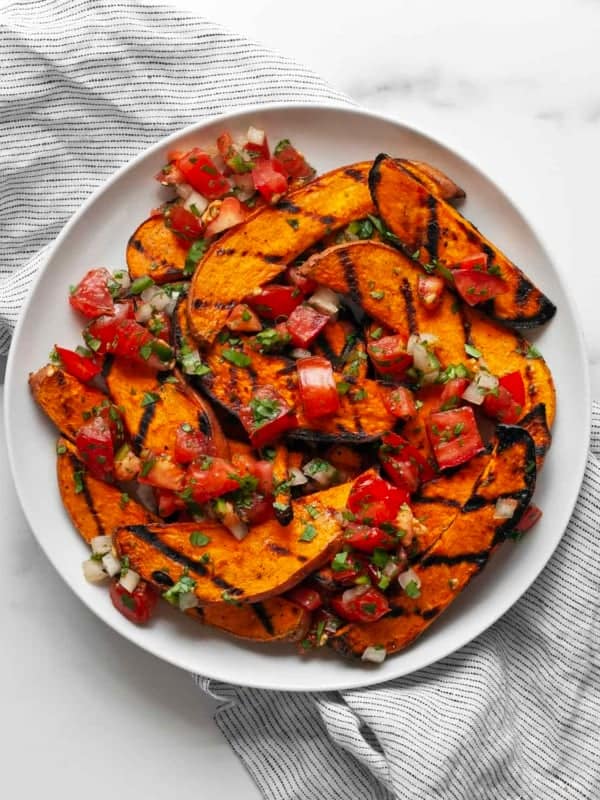
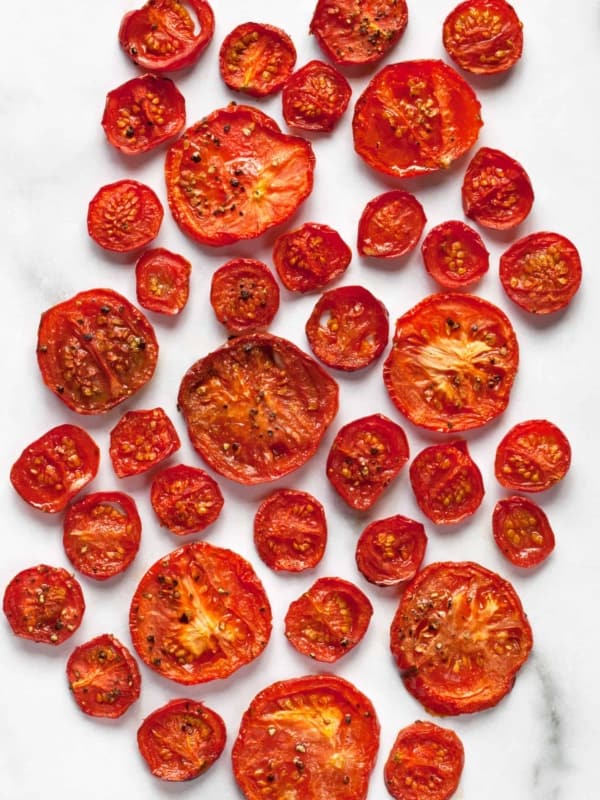
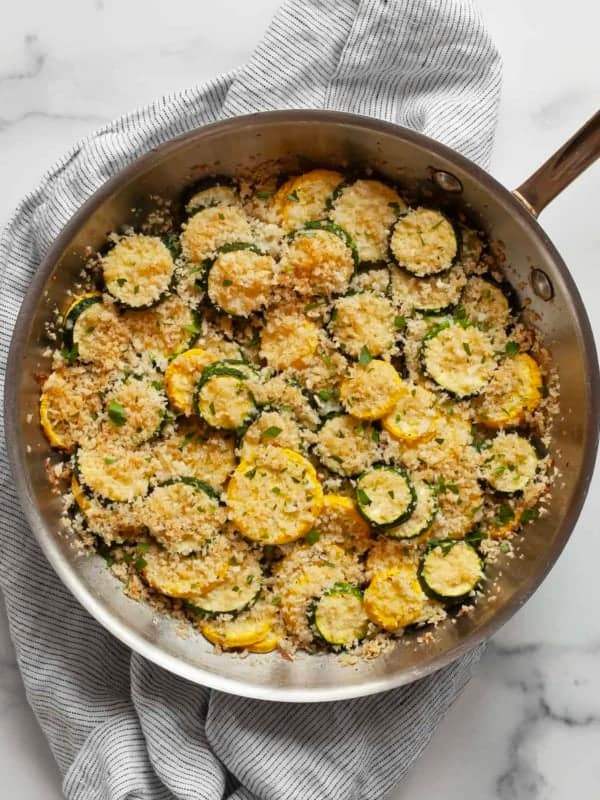









This worked so well. I had never grilled inside until I got a grill pan. Thanks!
This article just talked me into getting that ScanPan grill pan I’ve been eyeing for weeks! Thank you for the great info!
I had fantastic grilled edamame at a Japanese restaurant. How can I do this indoors? Would I use a veg grill basket or can I put directly on the pan? So much more flavor than just steamed. Thanks!
I’ve never tried to grill edamame. Because there’s no risk of it falling through the grates of the grill since you are using a grill pan, I don’t think you need to use a grill basket.